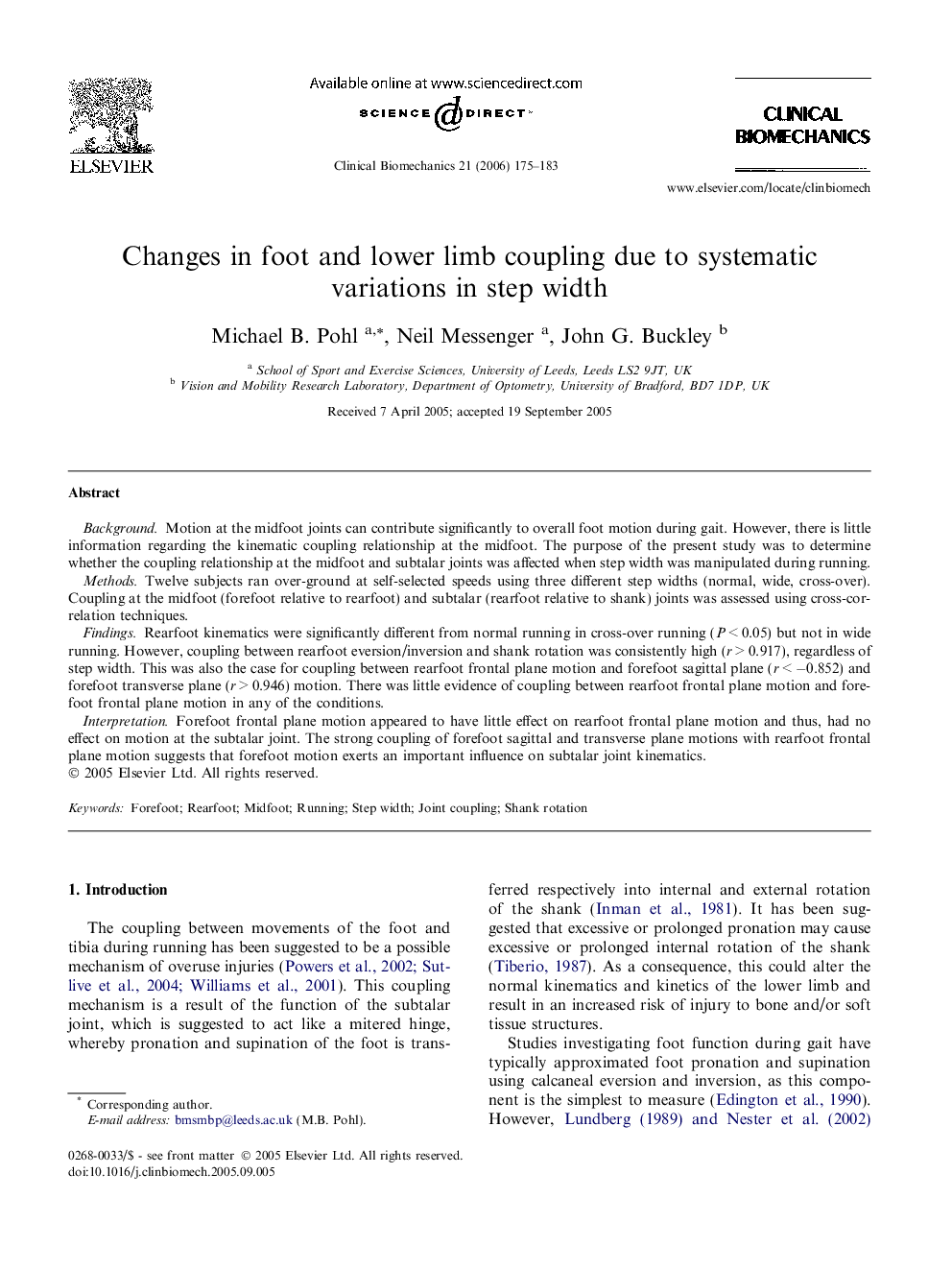| Article ID | Journal | Published Year | Pages | File Type |
|---|---|---|---|---|
| 4051778 | Clinical Biomechanics | 2006 | 9 Pages |
BackgroundMotion at the midfoot joints can contribute significantly to overall foot motion during gait. However, there is little information regarding the kinematic coupling relationship at the midfoot. The purpose of the present study was to determine whether the coupling relationship at the midfoot and subtalar joints was affected when step width was manipulated during running.MethodsTwelve subjects ran over-ground at self-selected speeds using three different step widths (normal, wide, cross-over). Coupling at the midfoot (forefoot relative to rearfoot) and subtalar (rearfoot relative to shank) joints was assessed using cross-correlation techniques.FindingsRearfoot kinematics were significantly different from normal running in cross-over running (P < 0.05) but not in wide running. However, coupling between rearfoot eversion/inversion and shank rotation was consistently high (r > 0.917), regardless of step width. This was also the case for coupling between rearfoot frontal plane motion and forefoot sagittal plane (r < −0.852) and forefoot transverse plane (r > 0.946) motion. There was little evidence of coupling between rearfoot frontal plane motion and forefoot frontal plane motion in any of the conditions.InterpretationForefoot frontal plane motion appeared to have little effect on rearfoot frontal plane motion and thus, had no effect on motion at the subtalar joint. The strong coupling of forefoot sagittal and transverse plane motions with rearfoot frontal plane motion suggests that forefoot motion exerts an important influence on subtalar joint kinematics.
